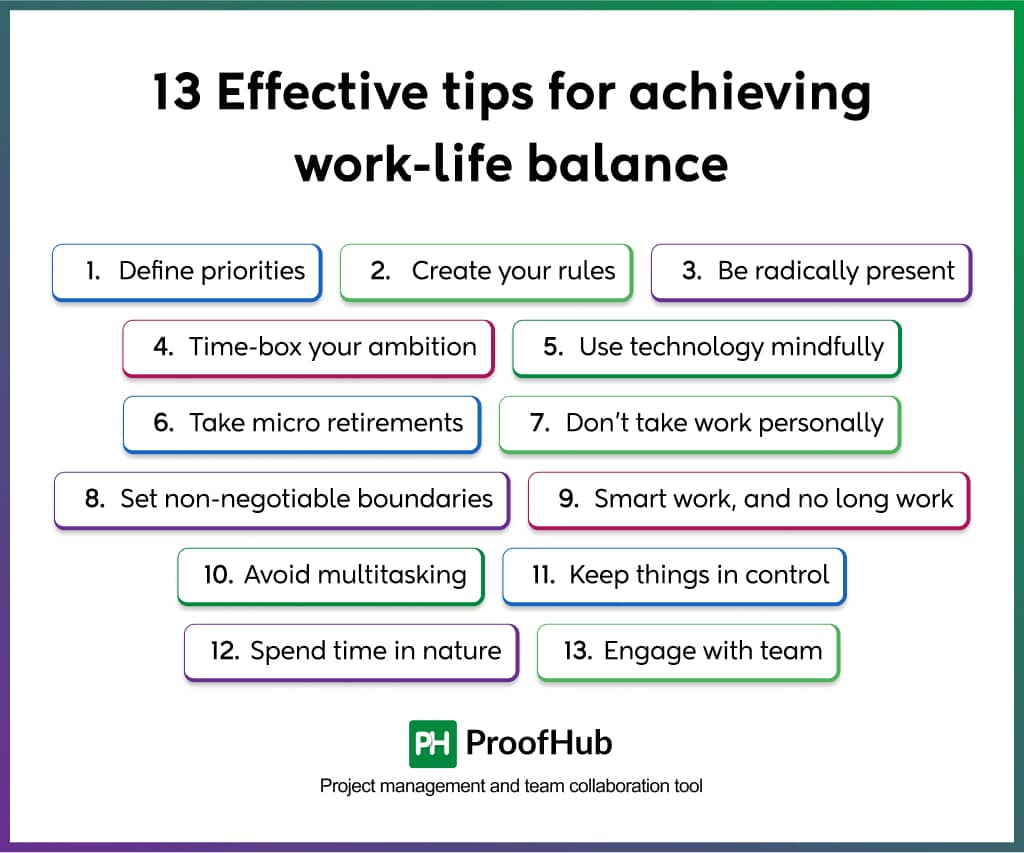Strengthening Your Work-Life Boundaries in 2025: Practical Strategies for Success
Author and speaker on mindfulness in daily life.

Author and speaker on mindfulness in daily life.

Work-life boundaries are the lines we draw between our professional and personal lives. These boundaries help us allocate time and energy effectively, ensuring neither area dominates the other. They are essential for preventing burnout and maintaining overall well-being.
Remote work has become increasingly common. Setting boundaries is crucial to prevent work from spilling into personal time. Without clear boundaries, it's easy to fall into the trap of always being available.

This can lead to increased stress and reduced job satisfaction. If you are working remotely, it's important to set boundaries to maintain a healthy work-life balance.
Technology has blurred the lines between work and personal life. Smartphones and laptops make it easy to stay connected to work at all times. This constant connectivity can make it difficult to switch off, leading to a sense of always being "on."
The first step to improving work-life balance is to assess your current situation. Identify the main stressors and imbalances that are causing you to feel overwhelmed. Common stressors include long work hours, constant interruptions, and unclear expectations.
Understanding your priorities is key to creating a balanced life. Determine what matters most to you in both your personal and professional life. This will help you allocate your time and energy more effectively.
One of the most effective ways to strengthen work-life boundaries is to set specific work hours. Define when your workday starts and ends, and stick to these times as much as possible. This helps create a clear separation between work and personal time.
Once you've set your boundaries, it's important to communicate them to others. Let your colleagues and family know when you are available for work-related tasks and when you are not. This helps manage expectations and prevents unnecessary interruptions.
Technology can be a valuable tool for managing your time effectively. Use task management apps like Trello or Asana to organize your work and track your progress. Scheduling tools like Google Calendar can help you plan your day and allocate time for both work and personal activities.
While technology can be helpful, it can also contribute to digital overload. Reduce digital overload by setting specific times for checking emails and messages. Turn off non-essential notifications to minimize distractions.
Taking regular breaks and time off is essential for maintaining a healthy work-life balance. Breaks help you recharge and prevent burnout. Use this time to step away from work and engage in activities you enjoy.

Effective rest involves more than just taking a break. Engage in activities that help you relax and recharge, such as exercise, meditation, or spending time with loved ones. These practices can significantly improve your overall well-being.
Setting realistic and specific goals is crucial for maintaining work-life balance. Break down your goals into smaller, actionable steps. This makes them more manageable and easier to achieve.
Instead of setting vague goals like "improve work-life balance," create specific, measurable goals. For example, aim to leave work by 6 PM each day or dedicate one hour each evening to a personal activity.
Regularly track your progress towards your goals. If you find that certain strategies are not working, be willing to adjust them. Flexibility is key to maintaining a healthy work-life balance over time.
Self-care should be a priority in your daily routine. Incorporate activities that promote physical and mental health, such as exercise, meditation, or hobbies. These activities help reduce stress and improve overall well-being.
Create a supportive environment both at work and at home. Surround yourself with people who respect your boundaries and support your efforts to maintain a balanced life. This can make a significant difference in your ability to manage stress and stay motivated.
Learning to say "no" is an essential skill for maintaining work-life balance. Prioritize your commitments and avoid overcommitting yourself. It's okay to decline additional tasks or responsibilities if they will negatively impact your balance.
Delegation is another important strategy for managing your workload. Identify tasks that can be delegated to others, both at work and at home. This frees up your time and allows you to focus on your priorities.
Technology has made it easier than ever to stay connected to work. However, this can also create the expectation of always being available. Set clear expectations with your colleagues and superiors about your availability outside of work hours.
Leaders play a crucial role in setting the tone for work-life balance within an organization. By modeling healthy boundaries and respecting their own personal time, leaders can encourage their teams to do the same. This creates a culture that values and supports work-life balance.
Balancing household and work responsibilities can be particularly challenging. Explore flexible work arrangements that can help you manage both areas more effectively. This might include working from home on certain days or adjusting your work hours to accommodate family needs.

Team support and collaboration can make a big difference in managing work-life balance. Encourage open communication within your team about workloads and responsibilities. This can help identify opportunities for support and collaboration, making it easier to balance work and personal life.
Setting and maintaining work-life boundaries is an ongoing process. It requires continuous effort and adjustment as circumstances change. Be patient with yourself and stay committed to finding a balance that works for you.
Organizations have a responsibility to support their employees' work-life balance. This includes offering flexible work arrangements, promoting a healthy work culture, and providing resources for managing stress and well-being. You can learn more about work-life balance trends on our blog.
As we look ahead to 2025, the concept of work-life integration will continue to evolve. Remote work trends are redefining the traditional work model, offering new opportunities for flexibility and balance. Embracing these changes and adopting effective strategies will be key to achieving a fulfilling and balanced life.
Key Takeaways:
— in Productivity
— in Productivity
— in Productivity
— in Productivity
— in Productivity